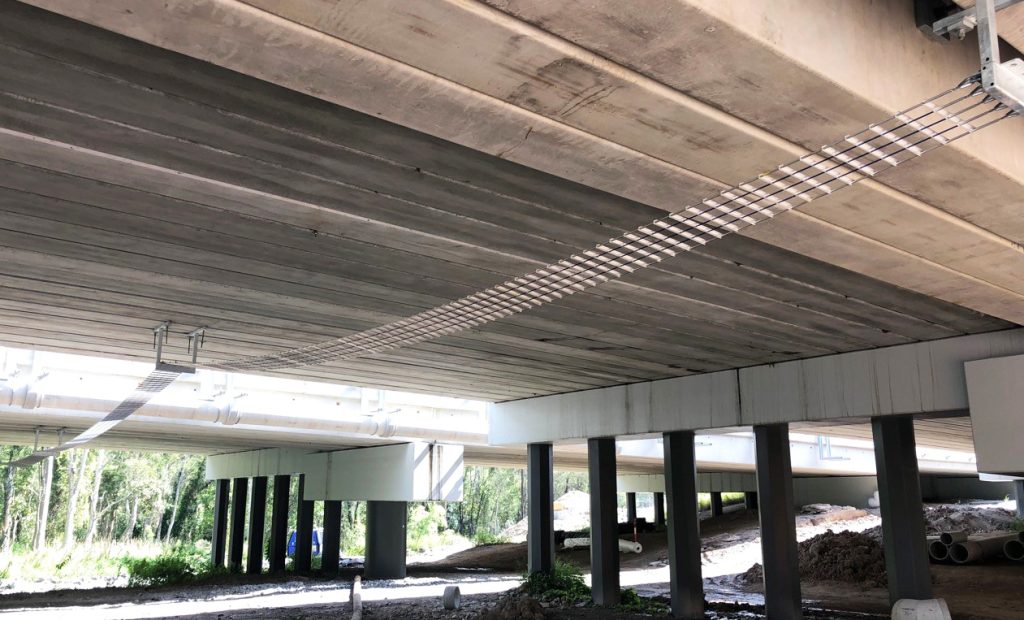Fauna crossings becoming an increasingly common part of major transport infrastructure projects and are saving lives – and not just animal ones.
Whichever way you look at it, animals and cars are a bad combination.
From the human perspective, there were 116 accidents due to animal collisions in NSW and the ACT in 2020, according to the NRMA‘s Wildlife Road Safety Report released in November 2022. Almost a quarter of these crashes resulted in serious injury.
However, as it was a COVID year, that number was relatively low; it had been averaging around 160 per year in the previous five years. About half the accidents involved wallabies and kangaroos.
The numbers are even worse from an animal’s perspective. Approximately 10 million animals die on Australian roads every year. This is especially troubling when coupled with Australia’s reputation for being an extremely biodiverse country with a high number of endemic species, but a disproportionate number of extinctions.
The NRMA report surmised that as roads are engineered to enable water to run off the surface quickly, the resulting water pools beside the road attract animals, a problem exacerbated by the many large trees alongside roads that provide animals with shelter and shade.
Fauna crossings, including bridges, underpasses and rope ladders, are increasingly being deployed in major transport projects. Research shows they are effective in both reducing human and animal deaths and injuries.
Tailor-made
David Sullivan from Fauna Crossings has designed and built a variety of crossings around Australia and has been approached to produce 10 crossings for the new inland rail project. He says the type of crossing depends on the species.
“A lot of people think that koalas use the rope crossings, but they will only go in underpasses, on a pole frame,” he says.
“We just built one for Brisbane City Council that was a steel frame but we put iron bark around it to look like a tree – it’s the only one in Australia.”
Mr Sullivan said pole spacing was also a major consideration. Koalas generally won’t go more than 25 metres on the ground, and gliders rarely touch the ground, gliding from the top of one pole to the bottom of the next before climbing to the top to repeat the process. The poles can be as high as 25 metres and can be incorporated into archways (overpasses) until the trees also planted on the archway reach a usable height.
Archways are also effective for ground-dwelling animals such as echidnas, goannas and wallabies.
Rope crossings are a familiar sight on main highways, and mainly cater for possums. Mr Sullivan has just made an aluminium crossing which he says should last about 50 years, whereas the rope crossings last around 15 years due to sun exposure. He has made rope crossings up to 80 metres long.
Mr Sullivan also incorporates refuge holes along the crossings to allow smaller animals to hide from predators such as owls and eagles.
Built it and they will come
Even though many developers and infrastructure companies incorporate fauna crossings to tick a box, Mr Sullivan said the demand continues to grow, especially as the cameras installed to track usage increasingly show a variety of animals using the crossings.
“The more they see who is using them, and where, the more they will put them up,” he says.
In fact a study by Southern Cross University last year suggested that threatened species especially will benefit from more underpasses.
It stated that ‘road crossing structures for wildlife are intended to serve five objectives: reduce vehicle strike and road-kill; improve driver safety; enable wildlife to disperse to maintain gene flow; enable seasonal migration; and enable home-range movements.’
The study found that macropods and large reptiles were frequent users across a range of underpasses, whereas other animals seemed to prefer select underpasses, despite being frequently detected in adjoining forests.
The authors said their conclusion was that underpasses ‘are likely to assist in facilitating gene flow for many different threatened species and, therefore, assist their conservation,’ however noted that more thought could be given to underpass entrances, beyond erosion control towards habitat restoration.
Stats show success
Fauna crossings originated in France in the 1950s and are now common across the world. The Netherlands has more than 600, while a network of 44 bridges and underpasses along the Trans-Canada Highway through the Banff National Park is credited for reducing traffic accidents involving wildlife by more than 80 percent, in addition to gene-pool benefits for the resident bears.
In the US, the Nevada Department of Transportation evaluated the effectiveness of wildlife crossings on Highway 93 in terms of mule deer mortality and associated interactions with vehicles, and concluded that in 2015, the wildlife overpass was providing a cost-benefit ratio of 1.58. The US will also claim the largest wildlife crossing in the world in 2025 with the overpass at the base of the Santa Monica mountains measuring 64 metres long and 50 metres wide.
In Australia, in addition to taking sustainability into greater consideration with future infrastructure planning and construction, the NRMA has suggested technology might play a part in wildlife safety on our main roads: ‘for example, could a fleet of autonomous drones flying above a ‘risky road’ or thermal cameras lining the roadside, advise and enforce variable speed limits for a section of road if wildlife is detected, helping to protect people and wildlife?’
